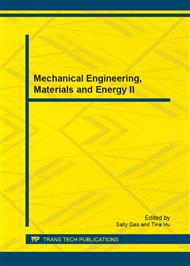p.430
p.436
p.441
p.448
p.453
p.457
p.461
p.465
p.469
Effect of Hot Extrusion on Microstructure and Mechanical Properties of P/M Al/SiCp Composite
Abstract:
Distribution of SiC particles in powder metallurgy (P/M) Al/SiCp composite during hot extrusion were investigated in this paper. It has been shown that a homogenous distribution of SiC particles in as-extruded rods has been achieved. There was an order and directional distribution of SiC in the longitudinal direction, which was related to the stress state associated with hot extrusion. With a small extrusion ratio (11), many obvious interfaces among the powders remained existent since the extrusion stress was not large enough to achieve a metallurgical bond. The interfacial bonding strength of the composite can be enhanced with a higher extrusion ratio, and metallurgical interfaces were achieved with the extrusion ratio of 17. Ambient tensile tests demonstrate that the mechanical properties change along with the extrusion ratio’s increasing.
Info:
Periodical:
Pages:
453-456
Citation:
Online since:
January 2013
Authors:
Price:
Сopyright:
© 2013 Trans Tech Publications Ltd. All Rights Reserved
Share:
Citation:


